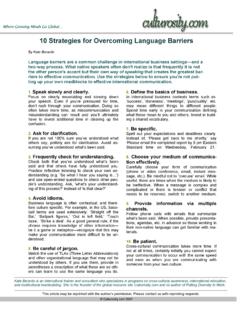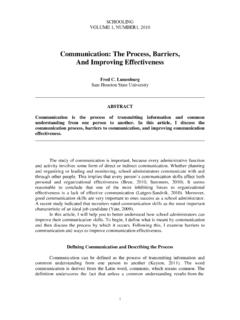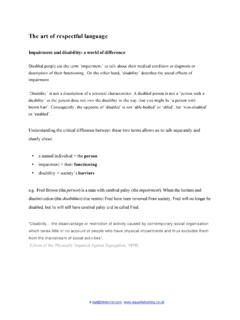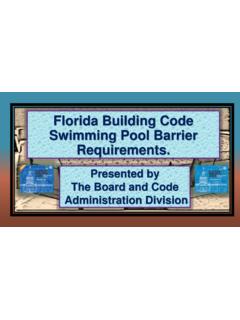Transcription of Practical Strategies to Overcome Barriers to Learning
1 Practical Support Strategies to Overcome Barriers to Learning Support Strategies Attention language Control Emotion Skills/ Communication A Use of mind map to record key ideas Concise 2 or 3 part instructions Ask student to paraphrase instructions Provision of vocabulary list with opportunities to rehearse Positive engagement using student name Immediate feedback on work tasks and approach to Learning Make explicit the implicit! Be aware of literal examples Use of visual timetable (symbols or colour coded) Consider seating position, in relation to class room Provision of materials in alternative font size and colouring B Access to peer or adult scribe or reader Explicit revision of prior Learning Positive praise and engagement via use of name Summarise tasks using visual prompt cards Positive rewards system linked to whole school policy Facilitate peer support via seating plan Structure group or paired activities Provide homework instructions at the start of the lesson Access to support equipment eg: sloping boards (Use of A3 lever arch file) Seating adjustment according to sensory barrier eg deaf in one ear C IT tools to support recording eg.
2 Laptop, audio recorder Practical apparatus (blue tac counters) Give student a role active engagement in task Give visual demonstration of task Direct engagement via role allocation (positive re-direction) Ask student to identify what they did well at after each lesson Use of visual prompts and real life examples Pictorial and written labels of equipment Consideration of posture Ask student to paraphrase work instructions D Provide photo copy of homework or task instructions Visual cues and aids (pictorial task cards) Turn to your partner instructions within class input Access to peer models/ supporters Reminder of class rules/ code of conduct to all students Ensure task appropriate to needs, using must, should, could analysis Provide advanced notice of change of task or lesson end Verbal or visual equipment check list Ensure access to equipment use of peer partner or LSA to support Targeted peer support reader or scribe E Provision of key word cards, linked to subject area or topic Alternative means of recording (peer or adult scribe, IT, pictures,) Visual prompt cards summarising task Verbal and written structures to support language eg cloze procedures Structured choices this and this needs to be done, but student determines Positive phone call or text to parent(s)/ Carer(s)
3 Clarify understand and encourage paraphrasing of instructions Awareness of writing posture, chair tucked in, 2 feet on floor Access to alternative means of recording (IT, audio recording) Repeat core points made by students during class discussion F Use of highlighter pen for text work Peer or small group working Use of blue tac stress ball to self occupy Use of powerpoint to structure self presentations Explicit praise of student to class Use of rating scale for self assessment Provide student with a ? card, to indicate a request for help Provide pre-prepared formats of graphs, charts etc Provision of homework instruction on photocopied sheet Use of appropriate auxiliary aids Class List identifying Barriers to Learning Name of Student C of P Literacy Learning Listening/ Attention Speech/ language Behaviour/ Control Confidence/ Emotion Social Skills/ Comm Organisation Physical Sensory Support Strategies






